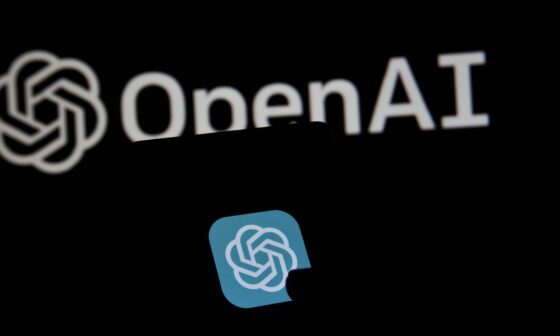The world of blockchain technology constantly evolves, and new blockchains are created constantly. But why can’t there just be one blockchain? The easiest answer is that different blockchains are needed for different purposes. For example, there is a need for a public blockchain like Bitcoin, which anyone can access and use. But there is also a need for private blockchains, which are only accessible to certain people or groups. In this article, we will explore the need for different blockchains and how they are being used today.
What is Blockchain?
At its most basic level, a blockchain is a digital ledger of transactions. It is constantly growing as “completed” blocks are added to it with a new set of recordings. Each block contains a cryptographic hash of the previous block, a timestamp, and transaction data. Most blockchains are used to sustain cryptocurrencies like Bitcoin, but blockchain technology can be used to create decentralized ledgers for any kind of data.
Why do we need different types of Blockchain?
The main reason for having different types of blockchain is due to the fact that not all blockchains are created equally. Some are designed for very specific purposes while others are more generalized. For example, Bitcoin is a very specific blockchain designed only for a single purpose – to enable peer-to-peer electronic financial transactions.
On the other hand, blockchains like Ethereum are much more flexible and can be used to fulfill different purposes by building custom decentralized applications. As such, these two blockchains serve different purposes and require different features.
Some features that may be found in one type of blockchain may not be present in another type. For instance, Bitcoin does not support smart contracts but Ethereum does. This means that if you want to develop a decentralized application that requires the use of smart contracts, you would need to use the Ethereum blockchain rather than the Bitcoin blockchain.
How Many Blockchains Are There?
Bitcoin was the first blockchain ever created, and still remains the largest and most well-known decentralized ledger in the world. However, the success of Bitcoin caused many other blockchains to be developed over the years for different purposes.
It’s important to note that not every cryptocurrency uses a separate blockchain. This is caused by the fact that many blockchains such as Ethereum can support many different cryptocurrencies at once. Because of that, the number of existing cryptocurrencies is much higher than the number of existing blockchains.
While it is hard to precisely estimate the exact number, experts claim that tens of thousands of different tokens exist. However, the number of blockchains is much lower, estimated to be around 1,000.
This number does not include private blockchains – smaller scale blockchain networks which have been created for enterprise use cases. Since these blockchains are often used only within a single company and are not accessible by the general public, it’s impossible to know how many of them are currently in use.
Public blockchains like Bitcoin allow anyone to view or edit the ledger. Private blockchains limit access to the network to only those with permission. Consortium blockchains are somewhere in between, typically with one organization controlling the network. There are also hybrid blockchains, which combine features of public and private networks.
Who Can Make a Blockchain?
At first, creating a blockchain was very hard. Only computer scientists with a lot of experience were able to build a blockchain network. However, this has changed over the years. Specialized blockchain development companies can help any organization or institution with setting up either a public or a private blockchain.
So, who can make a blockchain? In short, anyone can! There are many platforms and blockchain development services that allow anyone to create their own blockchain. What’s even better is that blockchain development enables a high degree of customization – from very simple blockchains serving just one purpose, to complex and multi-functional decentralized networks.
The important thing to remember is that each blockchain serves a specific purpose. When deciding whether or not to employ blockchain technology in your organization, ask yourself what problem you’re trying to solve. It’s not always necessary to build your own blockchain from scratch – sometimes you can benefit more from utilizing specific decentralized solutions like smart contracts or NFTs.
Private vs Public Blockchains
There are two main types of blockchains: public and private. Public blockchains are permissionless, meaning anyone can join the network and start interacting with it. Private blockchains, on the other hand, are permissioned, meaning only certain people or entities can access and interact with the network.
In other words, the main difference between public and private blockchains is who is allowed to access and interact with the network. Public blockchains are open to anyone, while private blockchains are restricted to certain people or entities.
Public blockchains are the most common type of blockchains. They’re more decentralized, meaning they’re not controlled by any single entity. They’re also more transparent, since all transactions recorded on the blockchain are visible to anyone. Finally, public blockchains are censorship resistant, since it’s harder for bad actors to gain control of the network.
Private blockchains also have their advantages, but they usually fulfill different purposes. While public blockchains are used for cryptocurrency transactions, private blockchains are used to store other kinds of data. For example, healthcare providers use private blockchain to store sensitive data about their patients.
Because private blockchains are built on a much smaller scale, they’re usually much faster and more efficient than public blockchains, since they don’t have to deal with as much traffic. They’re also more secure, because only approved users can access the network.
Ultimately, it’s worth remembering that there’s no one-size-fits-all solution when it comes to choosing a blockchain. It depends on your specific needs and requirements. If you’re looking for a highly secure network that’s not open to everyone, a private blockchain might be right for you. If you’re looking for a decentralized network that’s open to everyone, a public blockchain might be better.
How Can a Company Benefit From a Private Blockchain?
A private blockchain is a digital ledger that is not publically accessible. This means that only authorized individuals can view and edit the data on the blockchain. Private blockchains are often used within businesses and organizations to streamline internal processes and reduce the costs of record-keeping.
There are many ways in which a company can benefit from using a private blockchain. Firstly, it can help to improve efficiency by automating manual processes and eliminating the need for paper records. Secondly, it can reduce the costs associated with maintaining records and storing data. Thirdly, it can help to improve security by ensuring that only authorized individuals have access to sensitive information. Finally, it can provide a tamper-proof record of transactions that can be used for auditing purposes.
Conclusion
While it would technically be possible to have just one blockchain to rule them all, in practice it’s better when different blockchains are built for different purposes. The need for different blockchains arises from the fact that different organizations have different needs and wants. For many companies, using the services of a blockchain development company like Avolox to build a custom, private blockchain would be much more beneficial than using a standard public blockchain network.







